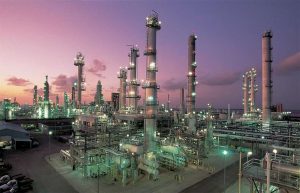
London — U.S. oil refinery margins have halved since the middle of 2022 but they are still at historically high levels and will be supported through the summer of 2023 by high operating rates and low fuel stocks.
Gross margins for producing two barrels of gasoline and one barrel of distillate fuel oil from three barrels of crude have retreated to $33 per barrel from a record $60 at the start of June 2022.
Even at this reduced level, however, margins are in the 95th percentile for all trading days since 2001, which is underpinning refinery profitability and encouraging high levels of capacity utilisation.
After adjusting for the impact of inflation, real margins are at the highest levels for almost eight years since July 2015.
Gross margins have to cover operating expenses, including fuel, electricity and catalysts, as well as labour and capital costs.
U.S. refineries were operating at 92.0% of their maximum operable capacity in the seven days ending on May 12, according to the U.S. Energy Information Administration (“Weekly petroleum status report”, EIA, May 17).
The operating rate was 3.9 percentage points higher than the seasonal average for the previous ten years, or 2.0 percentage points higher if the baseline is adjusted to remove the pandemic disrupted year of 2020.
At the same time, inventories of gasoline and especially distillate fuel oils like diesel are well below normal for the time of year, ensuring refineries will have to run hard to prevent any further depletion and try to rebuild them.
On May 12, gasoline stocks were 12 million barrels (-5% or -1.04 standard deviations) below the prior ten-year seasonal average while distillate stocks are 23 million barrels (-18% or -1.41 standard deviations) below average.
ExxonMobil’s Beaumont refinery expansion has added an extra 250,000 barrels per day of capacity this year on the U.S. Gulf Coast.
But lean inventories are likely to keep capacity utilisation rates higher than normal unless and until the economy experiences a deeper downturn limiting fuel consumption.
*By John Kemp
Editing by Kirsten Donovan – Reuters
This article was originally posted at sweetcrudereports.com
Be the first to comment